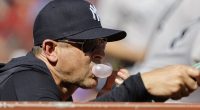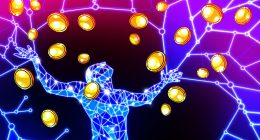Before he died last year, Roland Griffiths was arguably the world’s most famous psychedelics researcher. Since 2006, his work has suggested that psilocybin, found in magic mushrooms, can induce mystical experiences, and that those experiences, in turn, can help treat anxiety, depression, addiction and the terror of death.
Dr. Griffiths and his colleagues at Johns Hopkins University received widespread recognition among scientists and the popular press, helping to pull the psychedelic field from the deep backwater of the 1960s hippie movement. This second wave of research on the hallucinogenic compounds bolstered political campaigns to decriminalize them and spurred biotech investment.
Dr. Griffiths was known to friends and colleagues as an analytical thinker and a religious agnostic, and he warned fellow researchers against hype. But he also saw psychedelics as more than mere medicines: Understanding them could be “critical to the survival of the human species,” he said in one talk. Late in life, he admitted to taking psychedelics himself, and said he wanted science to help unlock their transformative power for humanity.
Perhaps unsurprisingly, he held a vaunted, even prophetic role among psychonauts, the growing community of psychedelic believers who want to bring the drugs into mainstream society. For years, critics have denounced the outsize financial and philosophical influence of these advocates on the insular research field. And some researchers have quietly questioned whether Dr. Griffiths, in his focus on the mystical realm, made some of the same mistakes that doomed the previous era of psychedelic science.
Now, one of his longtime collaborators is airing a more forceful critique. “Dr. Griffiths has run his psychedelic studies more like a ‘new-age’ retreat center, for lack of a better term, than a clinical research laboratory,” reads an ethics complaint filed to Johns Hopkins last fall by Matthew Johnson, who worked with Dr. Griffiths for nearly 20 years but resigned after a charged dispute with colleagues.
Dr. Griffiths acted like a “spiritual leader,” the complaint said, infusing the research with religious symbolism and steering volunteers toward the outcome he wanted. And he allowed some of his longstanding donors — supporters of drug legalization — to assist in studies, raising ethical questions.
“These are serious allegations that need to be investigated,” said Joanna Kempner, a medical sociologist at Rutgers University who reviewed the complaint for The New York Times. The clashes at Hopkins, she added, mirror a broader debate in the field over “blurring the lines between empirical research and spiritual practice.”
Many researchers see medical promise in the mind-opening power of psilocybin. But so far, it has not performed better than traditional drugs for depression in the only head-to-head comparison conducted to date. Its potential for treating other conditions, such as addiction and anorexia, is also uncertain. And the jury is still out on whether mystical experiences are key to the drug’s effectiveness.
“The inferences drawn in the literature at large certainly don’t follow from the evidence,” said Eiko Fried, a psychologist at Leiden University in the Netherlands who recently published a critical review of the field. The drugs also come with unpredictable risks, such as psychotic episodes, increased suicidality or extended emotional difficulties, which are most likely underreported.
In an email, Johns Hopkins told Dr. Johnson that it was investigating his allegations. A university spokeswoman did not respond to detailed questions for this article, but said that the research “is expected to meet the highest standards for research integrity and participant safety.”
Skeptical Beginnings
In the 1950s and ’60s, a spate of studies reported near-miraculous results using hallucinogens to treat alcoholism and depression. Then came the backlash.
Harvard made headlines for firing professors who doled out LSD and psilocybin to students. During the 1971 murder trial of the cult leader Charles Manson, a psychiatrist testified that LSD could have made Mr. Manson’s followers more likely to commit murder.
Psychiatric researchers, meanwhile, began adopting the randomized clinical trials that had revolutionized other fields. Seven controlled clinical trials in the 1960s and ’70s tested LSD’s utility for alcohol addiction. Six came back negative.
Dr. Griffiths, who grew up near Berkeley, Calif., experimented with LSD during college, he later told interviewers, but was skeptical of the claims around it. He was finishing up his doctoral research in psychopharmacology in 1970 when LSD and psilocybin became illegal, making them harder to study.
He set up a lab at Johns Hopkins that for decades published well-regarded studies on caffeine, heroin and other drugs. He didn’t think much about psychedelics until the 1990s, when he began practicing meditation and reading about mystical traditions.
Around that time, a friend introduced him to Bob Jesse, a former technology executive who founded a nonprofit called the Council on Spiritual Practices. Through legal briefs, scholarly research and a book-publishing venture, Mr. Jesse advocated the use of hallucinogenic chemicals and plants for the greater good of humanity. Now he wanted to give them the imprimatur of science, as he later said in a talk.
In 1999, with funding from Mr. Jesse’s nonprofit, Dr. Griffiths began recruiting healthy volunteers for an experiment. Mind-altering mushrooms had been used in religious rituals of various cultures for centuries. Could the same kind of meaningful experiences be induced in a lab?
His team distributed fliers around Baltimore: “Seeking Persons Committed to Spiritual Development for a Study of States of Consciousness.”
Buddha in the Mind
Dr. Griffiths’s laboratory looked like a living room, with a couch, a selection of spiritual and art books and a shelf holding a Buddha statue. The idea was to make volunteers “appreciative of the spiritual states that can awaken,” according to Bill Richards, a psychotherapist and former Methodist minister who worked on multiple trials.
Dr. Richards delivered the psilocybin pill or a placebo to participants in a chalice-shaped incense burner from Mexico that Mr. Jesse had given the team. Neither the researchers nor the participants knew which pill was in the burner.
Donning an eye mask and headphones, volunteers were encouraged to lie down on the couch for the peak effects of the drug, which last around five hours. At the end of the session, Dr. Griffiths came in to document their experiences. “He was just amazed,” Dr. Richards said. “He wanted to hear their story over and over.”
Dr. Griffiths used a “Mystical Experience Questionnaire,” which has roots in a philosophy espoused by the novelist and psychedelic enthusiast Aldous Huxley. It asks volunteers to rate, for example, their sense of having “profound humility before the majesty of what was felt to be sacred or holy.”
More than half of the 36 participants in the first Hopkins study had a “complete” mystical experience. Many ranked it among the most meaningful of their lives. When the study was published in 2006, four commentaries from drug researchers ran alongside it, praising its rigor.
In his studies of other drugs, Dr. Griffiths later said, he had “never seen anything so unique and powerful and enduring.” The results, he said, suggested that “we’re wired for these kinds of experiences.” The Council on Spiritual Practices sent out a fund-raising letter claiming that the study “uses science, which modernity trusts, to undermine modernity’s secularism.”
The volunteers were not a random cross-section of the population. In his 2018 book, “How to Change Your Mind,” the author Michael Pollan observed that there were no “stone-cold atheists” among the participants, which included an energy healer, a former Franciscan friar and an herbalist. Dr. Griffiths was open about this drawback of the study. “We were interested in a spiritual effect and were biasing the condition initially,” he told Mr. Pollan.
Some researchers suspected that the drug elicited mystical experiences because the unusual laboratory and questionnaire had primed the volunteers for that result. Dr. Richards also carried out some lengthy preparatory sessions with volunteers at his home office, he said, in order to develop trust.
“Roland did not do the kind of study I was both expecting and hoping he would do,” said Dr. Rick Strassman, a psychiatrist at the University of New Mexico. “He just jumped with both feet into the mystical experience world.”
Years earlier, Dr. Strassman had given psilocybin and intravenous DMT, a compound in ayahuasca tea, to more than 50 volunteers inside an austere room. Only one individual, a religious studies major, had a mystical experience. An architect with an interest in computers, by contrast, reported seeing “the raw bits of reality.” Others thought they had been abducted by aliens.
The drugs “had no inherent spiritual properties,” Dr. Strassman said.
Psychedelic researchers have long recognized that a volunteer’s mind-set and the setting where the session takes place — “set and setting,” they call it — are crucial to a subject’s response.
Such expectancy effects influence clinical trials of all kinds. Because of volunteers’ hopes around a trial, even those who receive a placebo will often show more improvement than those who receive nothing. Some experts have suggested that psychedelics function as “super placebos” because they increase suggestibility.
Natasha Mason, a psychopharmacologist at Maastricht University in the Netherlands, said that while she understood the Hopkins researchers’ goals, the experimental design had put a thumb on the spiritual scale. “Their mystical experiences results are very high compared to other groups,” she said.
Dr. Richards rejected such criticism. Psychedelic drugs, he said, open a state of consciousness that allows for religious experiences.
“The Buddha, if you will, is in the human mind,” he said. “Whether there is a statue in the room or not doesn’t matter.”
Also Read More: World News | Entertainment News | Celebrity News








